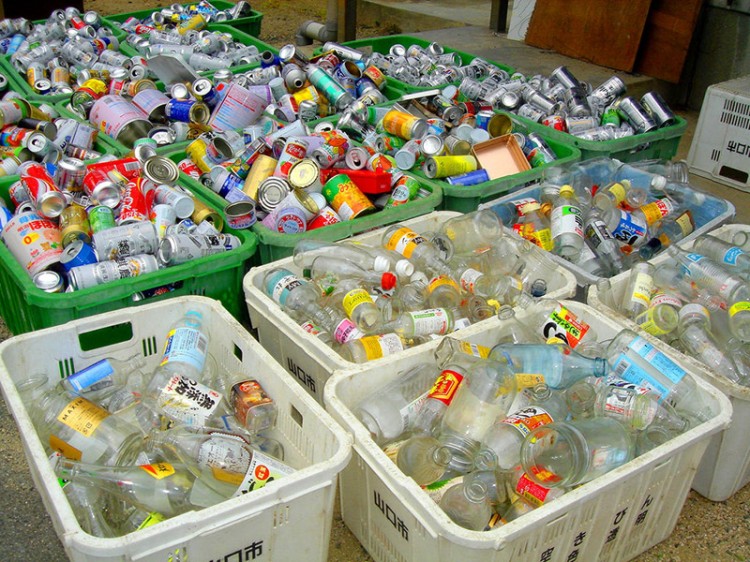
Sustainable living: Garbage classification and recycling
What is sustainability?
Sustainability is the most frequently mentioned topic in recent years, which refers to a process or state that can be maintained for a long time. The sustainability of human society consists of ecological sustainability, economic sustainability, and social sustainability. Sustainability requires a harmonious relationship between human beings and the natural environment, not only to achieve the goal of economic development but also to protect the natural resources and environments such as the atmosphere, freshwater, ocean, land, and forest. However, what I want to promote is how garbage classification and utilization can help promote sustainable living.
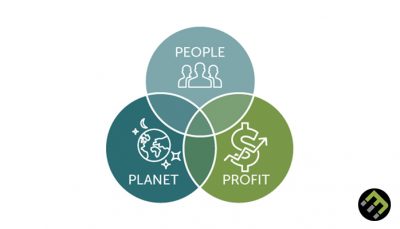
Image: Bas Fransen, CEO EcoMatcher
My experience of garbage classification in Japan
Last year, during the summer holiday, I exchanged in Japan for two months. During the two months in Japan, I found that the most common thing in Japan was garbage bins. People who have been to Japan should have seen garbage bins of different sizes, colors, and shapes on the streets of Japan. It’s very difficult for a foreigner to classify garbage because there are different standards for garbage classification in the different cities of Japan. Every Japanese family has six or seven garbage bags. If you accidentally throw the waste into the wrong garbage bin, sorry, your garbage will be returned as it is.
When I lived in Japan, I stayed with a host family. Once I threw a plastic bottle cap into the kitchen waste. The next day, the garbage collector sent back the bag of garbage and told me that the bag of garbage was not qualified for classification. They could not help recycling, so I was asked to reclassify it. That night, with the help of my homestay mother, I found the bottle cap in a big bag of food scraps and threw it into the right garbage bag.
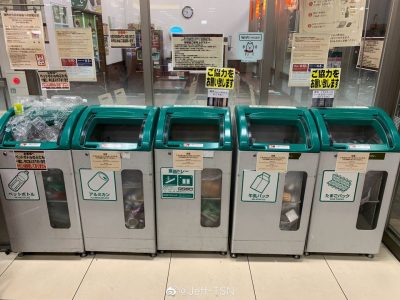
Image: Jeff-TSN
How strict is garbage classification in Japan?
From that time on, I learned that Japan is really strict in garbage classification and will be fined if it does not comply with the classification rules. Plastic bottles, glass bottles, and pop cans should be separated; the milk boxes should be opened and washed according to the steps on the packaging, and then flattened before they can be thrown into the garbage can; The plastic bottle body, bottle cap, and plastic wrapping paper should be thrown into three different bins; After eating the instant noodles, the cup should be washed clean, and then the tin foil cover should be torn off and throw the cup and cover into the recyclable garbage bin and the combustible garbage bin. I’m curious why I have to wash the instant noodle cup. My host family mother told me that the grease and food residue left in the cup belongs to kitchen garbage, which will affect the recycling if it is not cleaned.
I asked my host family mother, why the Japanese paid so much attention to garbage sorting? Is it because of the Japanese care about the environment? She said that Japan’s original intention was not for environmental protection, but fear. Because Japan is a small island country with a shortage of natural resources, they are particularly afraid because of its limited resources. After the end of World War II, Japan felt more and more suffering from the lack of resources, so they gradually improved the garbage classification system and tried to explore more usable resources from the waste materials.
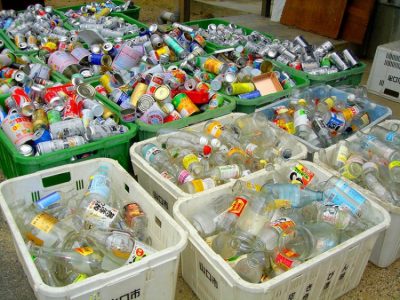 Image: Timothy Takemoto
Image: Timothy Takemoto
Garbage classification in the world
Every country has its garbage classification standards. When I first came to Australia, I lived in an Australian old lady’s house. After three years of boarding, I found that Australia’s garbage classification was really simple. Most Australian families have three garbage bins. The garbage bin with a yellow lid collects recyclable garbage, such as paper products, plastic bottles, etc. Green lid garbage bin is to collect natural garbage, such as branches and plants. The garbage bin with a red lid is to collect domestic garbage, which we called non-recyclable garbage, such as food residues.
In China, there are four types of garbage: dry garbage, wet garbage, recyclable garbage, and hazardous waste. Dry waste refers to the waste and dust that is difficult to recover, and dry waste refers to kitchen waste which can be converted into fertilizer.
In Japan, garbage is generally classified according to plastic bottles, recyclable plastics, other plastics, resource waste, large garbage, combustible waste, non-combustible garbage, and hazardous waste. Under these eight categories, there are different subcategories.
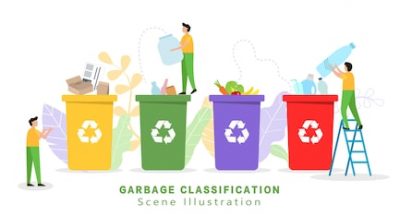 Image: Shutterstock
Image: Shutterstock
Why should we do garbage classification?
The purpose of garbage classification is to improve the resource value of garbage, strive to make the best use of it, reduce the cost of treatment, and reduce the consumption of land resources. It has social, economic, and ecological benefits.
Reducing land erosion:
Some substances in domestic waste are not easy to degrade, which makes the land seriously eroded. Waste classification can remove recyclable and non-degradable substances.
Pollution reduction:
Sanitary landfill is often used in the garbage disposal, which seriously pollutes the environment. The waste plastics in the soil will lead to crop yield reduction; the discarded waste plastics will be eaten by animals and lead to animal death. Therefore, recycling can also reduce harm.
Turning waste into treasure:
30% ~ 40% of the domestic waste can be recycled, the resources can be maximum recycled after the garbage is classified. Garbage can be converted into resources, such as food, plants, and fabrics can be composted to produce organic fertilizer; Waste incineration can generate electricity, heat, or refrigeration; Bricks and mortar can be processed into building materials. It can not only protect the environment but also save resources.

Image: Green Sutra
What should we do for sustainability?
I saw a post in the #iSutain group before. The content was a girl who found that her grandmother collected a lot of things that she didn’t use and recycled them to make new objects. She asked her grandmother if she was doing this because of sustainable life. Her grandmother said no, it was a habit formed by poverty in the past. Today, recycling is not necessary but it doesn’t mean that we have enough recourse to waste, it’s just because our lives are getting better.
Today, a series of problems caused by the environment has been placed in front of all countries in the world. There is no country and no one can be isolated from it. To achieve sustainability, we must pay attention to the environment. If we don’t save and cherish resources, the existing ecology will be broken one day and the lack of resources will become a major problem for human beings in the future. Sort your garbage, do some recycling, let’s move towards sustainability!

Image: Kimberly Green
